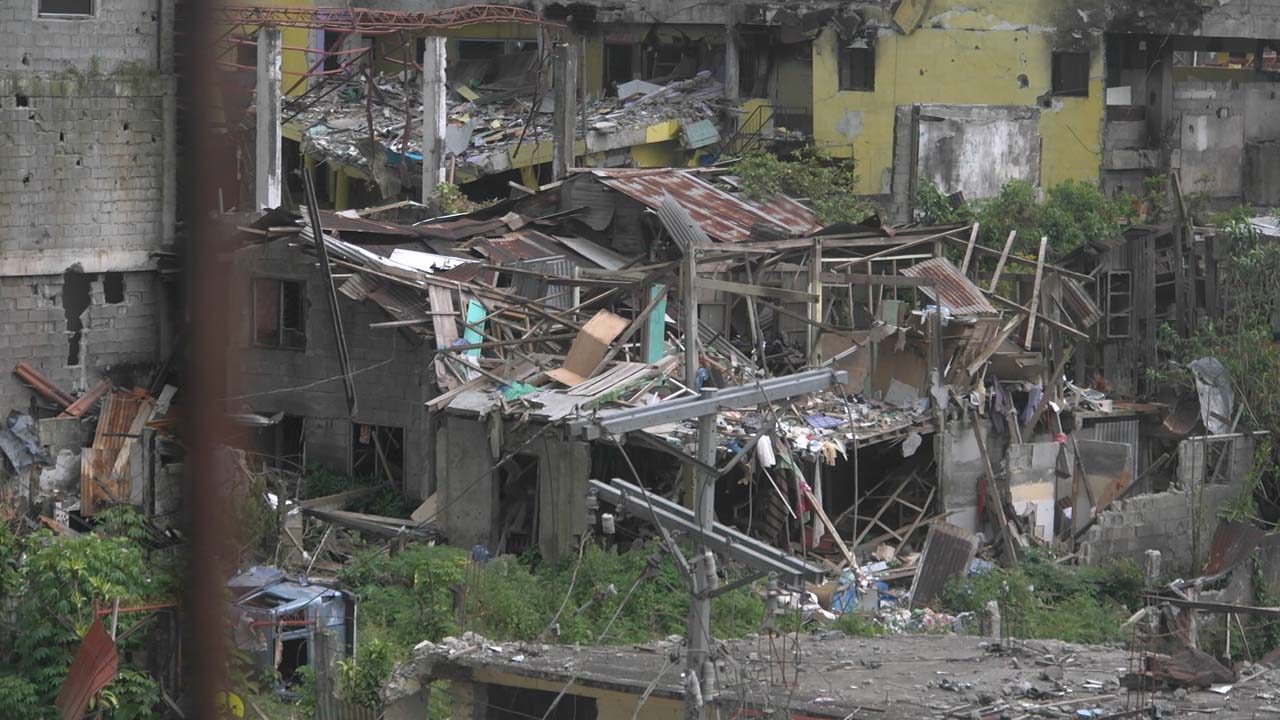SUMMARY
This is AI generated summarization, which may have errors. For context, always refer to the full article.

MANILA, Philippines – The government buckles down for the rehabilitation of Marawi City after President Rodrigo Duterte announced the city’s liberation from terrorists on Tuesday, October 17.
Duterte’s declaration was meant to “pave the way for the start of a full blown recovery, rehabilitation and rebuilding effort,” said Armed Forces of the Philippines spokesman Major General Restituto Padilla.
Office of Civil Defense Assistant Secretary Kristoffer Purisima, speaking before Duterte’s announcement, said with the deaths of terrorist leaders Isnilon Hapilon and Omar Maute, the government can now move quicker in the first phase of the rehabilitation.
“With yesterday’s development, we shall now focus on the rehabilitation of the conflict-stricken areas and plan for the return of our IDPs to Marawi City,” Purisima said during a press briefing.
The first step is to clear buildings of bombs and other “booby traps” installed by terrorists.
The Philippine military asked for more time to clear “60 to 80” buildings of unexploded bombs.
“We must be a 100% sure that no bomb, no IED, no booby trap is left in these areas,” Padilla said.
Return of evacuees
After the buildings are cleared, the government wants to facilitate the return of evacuees to their homes, if still intact.
The Marawi City government is working with the military in identifying areas where residents can safely return to their homes.
“A number of families will be assisted by troops in their return at the soonest possible time. They will be allowing residents to come back by barangay clusters,” said Purisima.
Barangays cleared by the military have been labeled as zones 0 to 12. Barangays that the military believes to be still unsafe have been labeled zones 13 to 17.
Temporary shelters
The government is preparing temporary shelters for residents whose homes were destroyed or heavily damaged by the conflict.
Purisima said 26 of the 50 transitional shelters have been turned over to displaced Marawi residents.
The Department of Public Works and Highways has also completed the site development for housing in a 9.9-hectare plot of land in Barangay Sagonsongan.
The acquisition of another area for housing is still being negotiated by the Marawi local government, he added.
The Bangon Marawi Task Force is reviewing the local rehabilitation plans prepared by the Lanao del Sur provincial government and the Marawi City government.
Damage assessment
To aid rehabilitation, particularly in the request for funds, 5 teams led by the OCD were sent to Marawi on Monday to conduct damage assessment in the cleared barangays.
The teams are set to complete its report by the end of October.
“The target date of completion for the field deployment, including data analysis, consolidation, and report development is on 27 October,” said Purisima.
The damage and losses assessment for the other barangays, those not yet cleared by the military, will begin right after the military’s clearing operations, he added.
Duterte’s declaration of Marawi’s liberation was made on the 148th day of the conflict.
While a “small number” of terrorists remain in the city, they are no longer a serious threat to government, AFP chief General Eduardo Año said in a statement. – Rappler.com
Add a comment
How does this make you feel?
There are no comments yet. Add your comment to start the conversation.